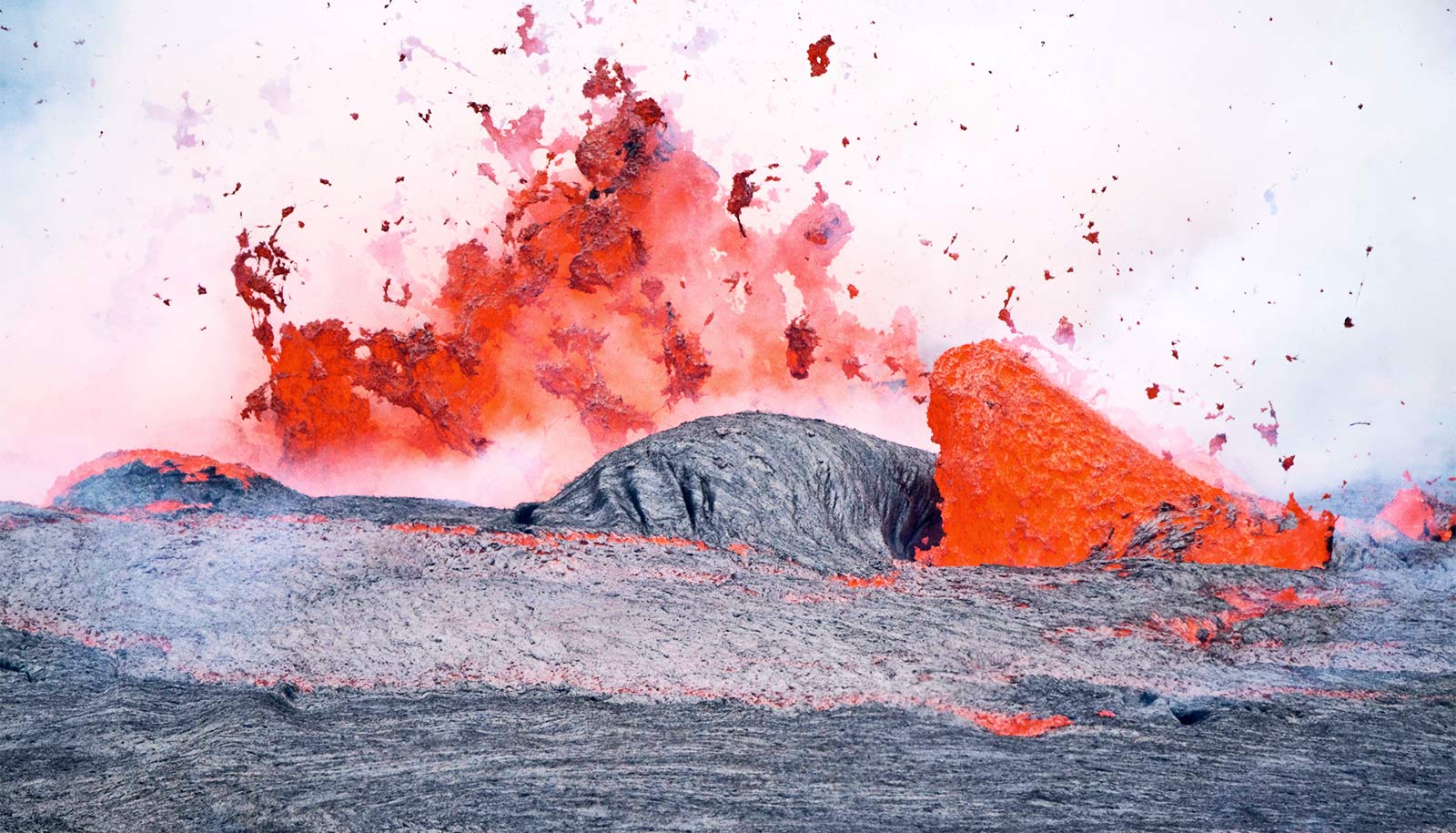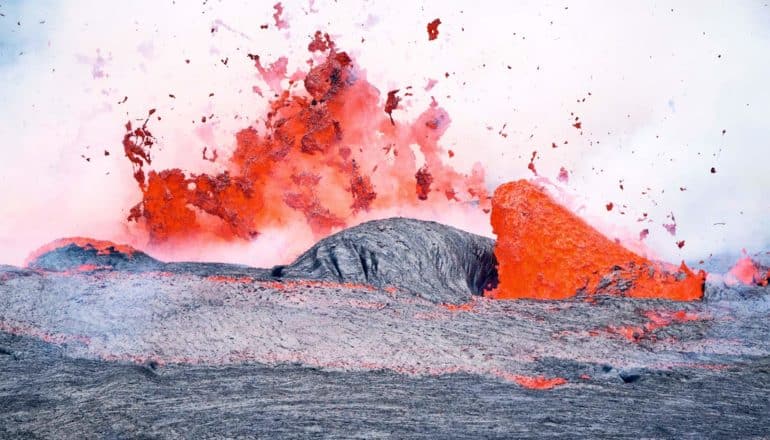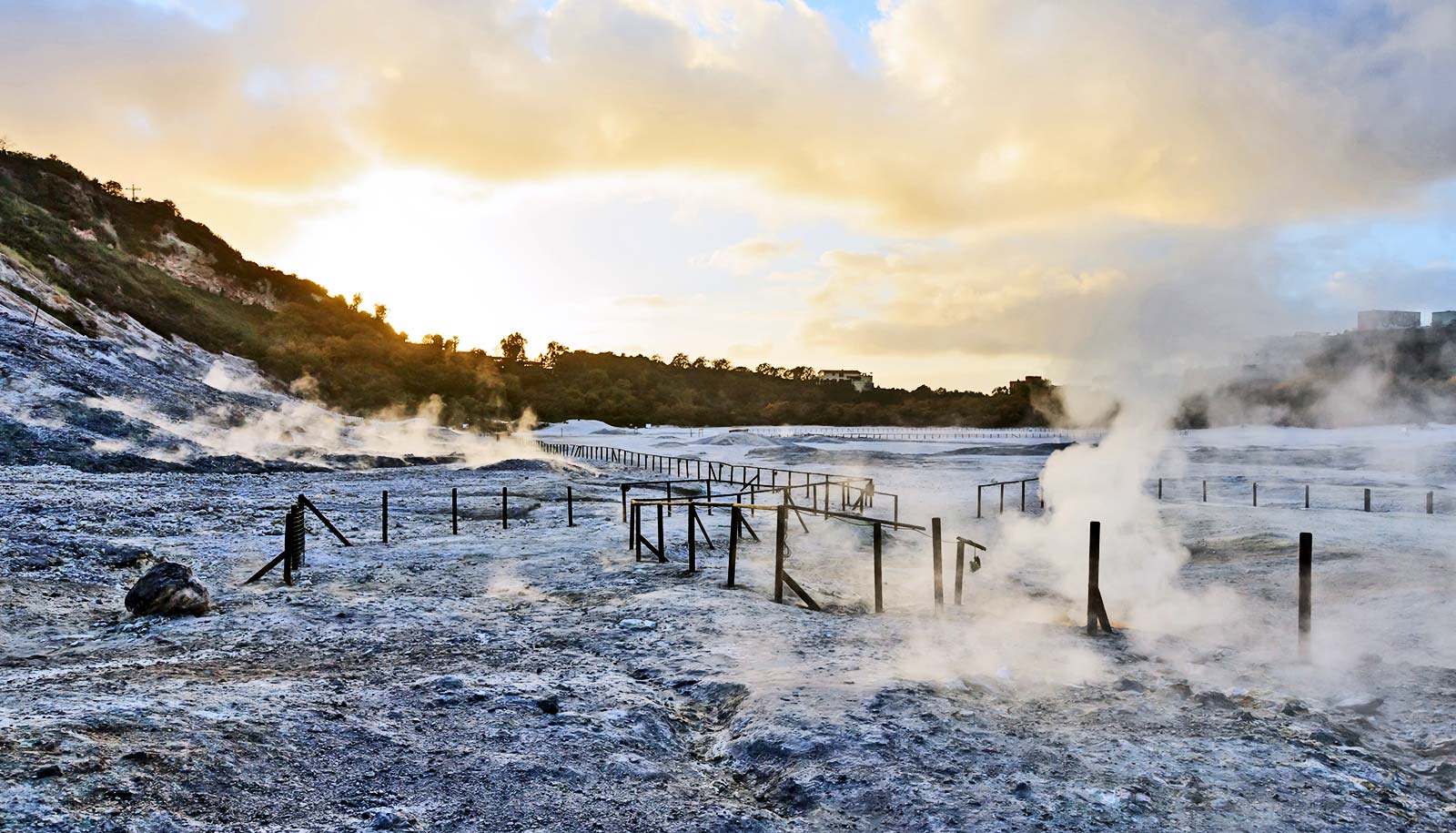
(Credit: Pierre-Yves Burgi/Unsplash )
Computer models solve magma ‘sweet spot’ mystery
Computer models can explain why the magma chambers that feed many volcanoes' explosive eruptions are found in such a small section of Earth's crust.

Computer models have revealed why the magma chambers that feed recurrent and often explosive volcanic eruptions tend to reside in a very narrow depth range within the Earth’s crust, researchers report.
The findings could help scientists to better understand volcanic processes the world over.
The research makes use of computer models that capture the physics of how magma chambers, reservoirs in the crust that contain partially molten rock, evolve over time. The models showed that two factors—the ability of water vapor to bubble out of the magma, and the ability of the crust to expand to accommodate chamber growth—are the key factors constraining the depth of magma chambers, which are generally found between six and 10 kilometers (between 3.7 and 6.2 miles) deep.
“…there seems to be a sweet spot in terms of depth for magma chambers that erupt repeatedly… Why that sweet spot exists has been an open question for a long time.”
“We know from observations that there seems to be a sweet spot in terms of depth for magma chambers that erupt repeatedly,” says lead author Christian Huber, a geologist at Brown University. “Why that sweet spot exists has been an open question for a long time, and this is the first study that explains the processes that control it.”
Depths of six to 10 kilometers generally correspond to pressures of about 1.5 kilobars on the shallow side and 2.5 kilobars on the deep side. The models showed that at pressures less than 1.5 kilobars, water trapped within the magma forms bubbles readily, leading to violent volcanic explosions that blast more magma out of a chamber than can be replaced. These chambers quickly cease to exist.
At pressures more than 2.5 kilobars, warm temperatures deep inside the Earth make the rocks surrounding the magma chamber soft and pliable, which enables the chamber to grow comfortably without erupting to the surface. These systems cool and solidify over time without ever erupting.
“Between 1.5 and 2.5, the systems are happy,” Huber says. “They can erupt, recharge, and keep going.”
The key to the models, Huber says, is that they capture the dynamics of both the host crust and of the magma in the chamber itself. The ability of deep magma chamber to grow without erupting was fairly well understood, but the limit that water vapor exerts on shallow magma chambers hadn’t been appreciated.
“There hadn’t been a good explanation for why this habitable zone should end at 1.5 kilobars,” Huber says. “We show that the behavior of the gas is really important. It simply causes more mass to erupt out than can be recharged.”
Huber says the findings will be helpful in understanding the global magma budget.
“The ratio of magma that stays in the crust versus how much is erupted to the surface is a huge question,” Huber says. “Magma supplies CO2 and other gases to the atmosphere, which influences the climate. So having a guide to understand what comes out and what stays in is important.”
The research appears in Nature Geoscience.
Support for the work came from the National Science Foundation and the Swiss National Fund.
Source: Brown University
The post Computer models solve magma ‘sweet spot’ mystery appeared first on Futurity.
Share this article:
This article uses material from the Futurity article, and is licenced under a CC BY-SA 4.0 International License. Images, videos and audio are available under their respective licenses.


